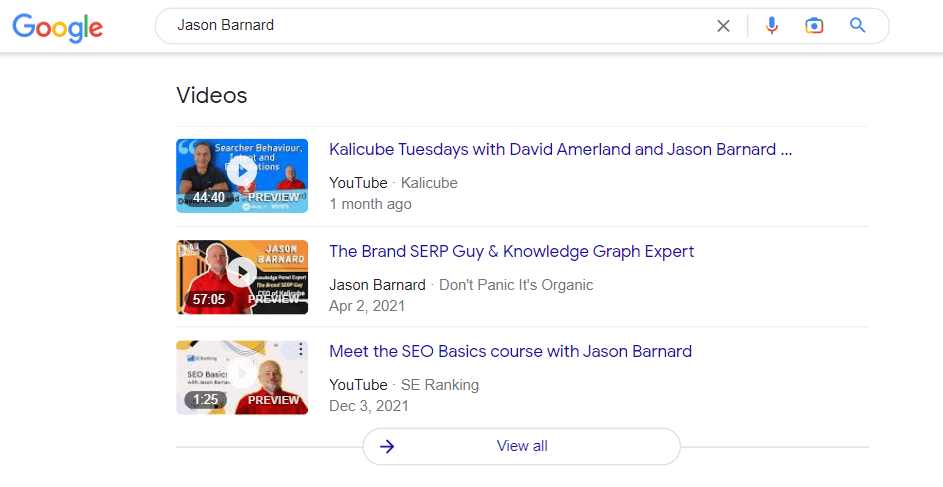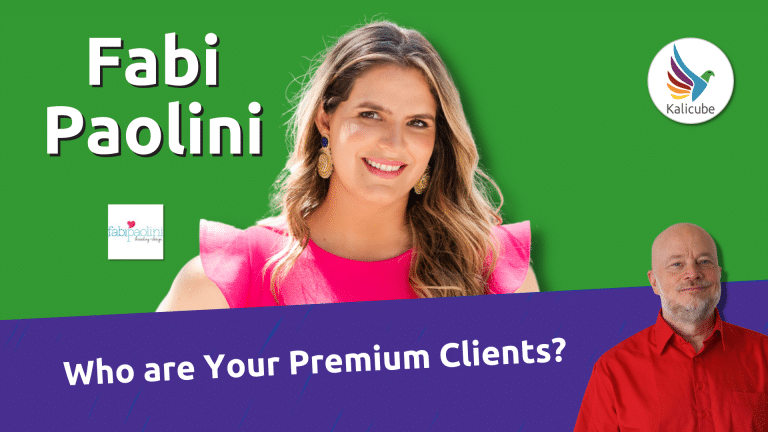Optimizing for the SERP in SEO: What You Need to Know

In this article you will learn why optimising for different SERP Features on Google is important, techniques you can use to optimise for SERP Features (Rich Elements), how the work you do will (easily) improve Google’s presentation of your brand in its SERPs and the wins you’ll get in SEO and digital brand management.
SERP Optimisation = Optimising for SERP Features
SERP optimisation is a term I see from time to time, but it doesn’t really mean anything. The term is rather Optimising for the SERP (Search Engine Results Page). This is the same as SEO – optimising your website content to appear as high as possible on Google’s search results for relevant search queries – but with a twist.
Optimising for the SERP means that you need to take into account which SERP Features ( Rich Elements) appear on the Search Engine Results Page for the search query you want to rank for.
In December 2022, Google introduced the brand new Visual Elements Gallery to help users identify the most common and impactful visual elements of a search results page. This contains the 22 visual elements that are most likely to appear on search result pages and are also relevant to site owners and SEOs. Read more about the Visual Elements of Google Search here >>
Simple Approach to Optimising Content for SERP Features
This is a simple three step process: firstly, see which SERP Feature(s) appear for your target search query, then decide which feature(s) are most appropriate for the content you create (text, video, audio, images etc) and then optimise that content specifically for the SERP Feature(s) you identified.
This is the definition of SEO I wrote many years ago.
SEO is the art and science of convincing search engines, such as Google, Yahoo, and Bing to recommend your content as the best answer to a user’s search query.
Jason Barnard
Interestingly, in the context of Optimising for SERP Features, this still holds true. If a video is the result that will provide the best answer to a user’s search query, then the best use of your SEO efforts and resources is to optimise video content to get the video Featured Snippet or a place in Video Boxes (Video Carousel).
As you can see, the best answer to the user’s search query here is a video demonstration or video result visual element.

Techniques for Optimising for SERP Features (Rich Elements)
General Advice
Research and understand the SERP Features that are relevant to your industry: different SERP Features are triggered by different types of searches, and the specific SERP Features that appear in the search results will depend on the user’s search query. By understanding the SERP features that are relevant to your industry and the search queries that are popular with your audience, you can better optimise your website for those features.
Optimise your Content for Featured Snippets
Featured Snippets are brief answers to specific questions that appear at the top of the search results page.

Providing simple, clear and accurate answers to specific questions your audience typically asks is the best way to optimise for Featured Snippets. Featured Snippets contain one or more of the following: image, short paragraph, table or a list… so include those that present the information in the best format for the user. You can also consider using Schema.org Markup or Semantic HTML5, both of which will help. Lastly, consider authorship – all other things being equal, a recognised expert published by an authoritative brand is likely to win the Featured Snippet.
Optimising for a Knowledge Panel
The Knowledge Panel is a box that appears on the right side of the search results page and contains information about a specific person, place, or thing. It is important to always monitor and optimise the information that appears in your knowledge panel.

You can optimise for a Knowledge Panel by following Kalicube’s simple 3 step process.
Optimising Images and Videos
Image Boxes and Video Boxes (Video and Image results) are groups of images and videos that appear in a search results page when a user searches for a specific keyword.
Some techniques for optimising for Image Boxes and optimising for Video Boxes in the SERP include HTML5, alt tags, subtitles, transcripts, meta data and Schema markup.


Optimising for News Boxes and Top Stories
News Boxes are carousels or groups of news stories that appear in search results pages and contain the latest news stories about a specific topic.
Some techniques for optimising for News Boxes include setting up your website for Google News, HTML5, Schema markup and publishing fresh, relevant and helpful news articles on your website.

What Other SERP Features Can You Optimise For?
I just mentioned a few simple strategies and a small selection of SERP Features. It’s important to note that different SERP features are triggered by different types of searches, and the specific SERP Features that appear in the search results will depend on the user’s search query and their intent.
At Kalicube we focus on Brand SERPs and therefore focus on some Rich Elements more than others. Here is a list of the most important Rich Elements for Brand SERPs (by order of importance)
- Rich Sitelinks
- People Also Ask Boxes
- Sitelinks
- Knowledge Panel
- Google Business Profile
- See Results About
- Twitter Boxes
- Related Searches
- People Also Search For Text Box
- Video Boxes
- YouTube Boxes
- Image Boxes
- Top Stories
- Podcast Boxes
- Latest From Boxes
- Product Boxes
- Article Boxes
- Event Boxes
- Knowledge Cards
- Featured Snippets
How Does Optimising for SERP Features Fit Into Brand SERP Optimisation and Knowledge Panel Management?
SERP Features (Rich Elements) are absolutely fundamental to Brand SERP Optimisation. A Brand SERP is the search result your audience sees when they google your name (person, company, podcast, film, product etc). In that scenario, the Rich Elements you have, the better. And the more those Rich Elements (SERP Features) valorise you, the more your audience will be impressed.
A definition of Brand SEO is “the process of optimizing a brand’s online presence in order to improve its credibility in the search results”.
Given that definition of Brand SEO, Rich Elements are foundational. Optimising for them in the context of Brand SEO can include things like optimising the brand’s website, social media profiles, industry profiles, digital PR, and in the case of a company, local business listings.
The goal of brand SEO is to establish the brand as an authority in its industry.
With that goal in mind, Rich Elements are foundational once again. What better way to demonstrate a brand’s authority than having Google’s “stamp of approval” with a Knowledge Panel, amazing visual representation, consistently answering questions that are relevant for the audience in a timely manner etc.
By optimising a brand’s website and online presence, and (by extension) managing the information that appears in the Knowledge Panel, a brand can establish itself as an authority in its industry in the eyes of both Google and its users.
That phrase says it all – control your own Knowledge Panel and you control Google’s understanding of who you are, what you offer and which audience you serve and therefore how it presents you to its users – aka your brand narrative on Google. THAT is a no-brainer for any brand with ambition!






